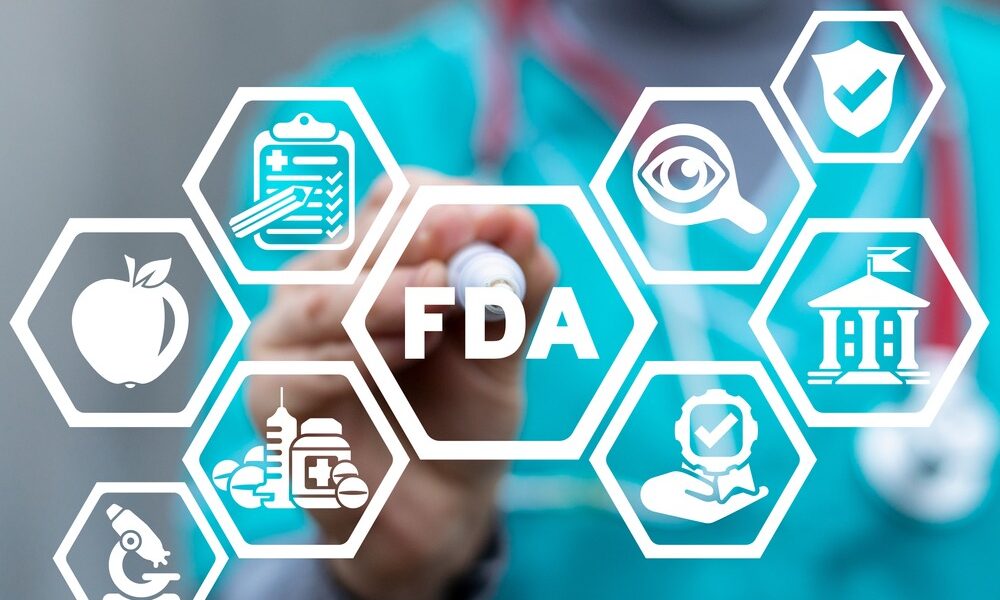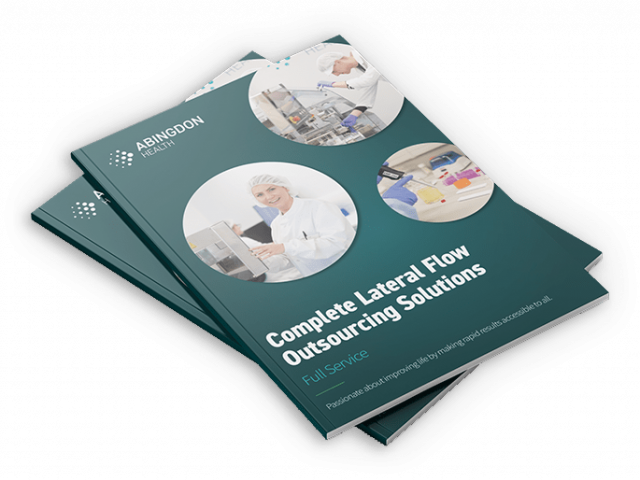Lateral Flow Development: FDA Q-Submission Process Explained

Navigating the FDA Q-Submission Process for Lateral Flow Tests
Understanding the FDA Q-Submission Process
Content of the Q-Submission
Key Considerations
Key Takeaways
Abingdon Health’s team has over 20 years experience in the lateral flow market and is a knowledge leader in the scale-up, transfer, manufacturing and regulatory approval of lateral flow products across a range of sectors including clinical (self-test, point of care), animal health, plant pathogen and environmental testing.
In this blog on regulatory approval processes, Abingdon’s Head of Quality Assurance & Regulatory Affairs (QARA), Candice Vendetuolli, outlines key considerations in the FDA pre-submission process for lateral flow tests.
If you would like to understand more about the regulatory process, including FDA submission, CE-marking and UKCA-marking consultancy and support services, and discuss any specific requirements or concerns, don’t hesitate to contact Abingdon’s highly experienced team.
Navigating the FDA Q-Submission Process for Lateral Flow Tests
Lateral flow tests have become integral in diagnostics, providing rapid and user-friendly results. To ensure the safety and efficacy of these tests, manufacturers must gain the appropriate FDA approval prior to accessing the US market. The approval process with the US Food & Drug Administration (FDA) can be lengthy, confusing and difficult. However, navigating and utilising the Q-Submission program provides the opportunity to gain feedback on a potential future submission, increasing the chances of success.
The FDA’s Q-Submission program is a way for medical device manufacturers to request feedback or meetings from the administration before submitting their applications for approval. The program has different types of Q-Submissions, such as:
- Pre-Submissions;
- Submission Issue Requests;
- Study Risk Determinations; and
- Informational Meetings.
The program helps manufacturers to prepare, position, and complete their regulatory submissions more efficiently and effectively.
In this blog post, we’ll explore the key aspects of this process and the considerations manufacturers should keep in mind.
Understanding the FDA Q-Submission Process
The Q-Submission process serves as a proactive step for manufacturers to seek feedback on their lateral flow tests before submitting a formal application. This collaborative approach fosters communication between the FDA and manufacturers, reducing the likelihood of delays or unsuccessful applications, and facilitating a smoother regulatory journey.
The main advantage of the FDA Q-Submission process is that it initiates early and open communication with the FDA to discuss goals, timelines, and expectations for successful granting of approval. Therefore, it is highly important to be prepared to address any questions or requests for additional information promptly.
To benefit from a Q-Submission, you should:
-
- Identify the type of Q-Submission that best suits your needs: Pre-Submission, Study Risk Determination, or Informational Meeting.
- Prepare a clear and concise Q-Submission package that includes a cover letter, a table of contents, an executive summary, and the specific questions you want to ask the FDA.
- Follow the FDA guidance on Q-Submissions and use the appropriate templates and checklists to ensure completeness and consistency.
- Submit your Q-Submission package electronically through the FDA eSubmitter system and request a confirmation of receipt.
- Communicate with the FDA lead reviewer and respond to any requests for additional information or clarification in a timely manner.
- Participate in the scheduled meeting or teleconference with the FDA and take notes of the feedback and recommendations.
- Consider working with a trusted partner who can provide invaluable regulatory expertise and knowledge to help prepare your pre-submission package or the final submission application to the best of your ability.
Content of the Q-Submission
The content of the Q-Submission must be tailored to the questions you are seeking answers to.
The FDA recommends to carefully consider the number of topics and extent of feedback requested in a Q-Submission to enable their team to give a thorough review and in-depth response. The FDA generally recommends limiting to 3 or 4 substantial topics for the best outcome and most productive review and meetings. If required, a further Q-Submission with different topics can be submitted in order to gain more feedback.
Key Considerations
Below, we outline some of the key considerations in preparing for an FDA Q-Submission. The old adage of “failing to prepare is preparing to fail” is a succinct summary of the critical need to plan your pre-submission and devote enough time and resources to the key considerations below, depending on the stage of your project and what you are looking to get out of the process.
-
- Documentation Preparation: It is imperative to ensure that the documentation is carefully prepared and detailed. This comprehensive documentation package should include device description, intended use, and technical specifications. It is important to clearly outline the test’s principle(s) of operation, components, and performance characteristics; and provide information on the test’s intended use, users, clinical applications, and any known limitations.
- Regulatory Strategy: As part of the pre-submission preparation is it also key to develop a clear regulatory strategy that aligns with the intended use and market placement of the lateral flow test. This approach should identify and address potential challenges or uncertainties related to the device’s design, performance, or intended user population.
- Risk Analysis: If available at the time of submission, risk analyses and mitigation strategies should be outlined. Conduct thorough assessments, identifying and mitigating potential risks associated with the lateral flow test; and clearly articulate risk management strategies to address any identified concerns to demonstrate that the benefits outweigh the risks.
- Performance Data: Present as much robust early performance data as is available to demonstrate the lateral flow test’s accuracy, sensitivity, and specificity. It is critical to highlight any pre-clinical studies conducted and provide evidence supporting the device’s performance claims, as well as outlining future clinical studies and the evidence they will generate to support the product’s claims and performance.
- Usability: At Abingdon the two principles we follow during development is “design for manufacture” and “design for the user”. It is essential that the pre-submission considers the end-user, to ensure the test is user-friendly and can be correctly interpreted by its intended users. Therefore, incorporate user feedback and usability testing results into the pre-submission documentation where possible.
- Labeling and Instructions for Use: Provision of clear and concise labeling and instructions for use is essential to a successful application for approval. Also, consistency is vital across your documentation. For example, ensure that the labeling and instructions for use aligns with the device’s intended market and user population throughout.
Key Takeaways
Navigating the FDA Q-Submission process for lateral flow tests is a strategic and collaborative effort. By diligently addressing key considerations and engaging in open communication with the FDA, manufacturers can enhance the likelihood of a successful regulatory outcome. As the landscape of diagnostics continues to evolve, a proactive and well-prepared approach is essential for bringing safe and effective lateral flow tests to market. And if time is of the essence, it is always a good idea to engage with a reputable partner to consult on, or assist with your application preparation, ideally from the outset of product development.
Decades of experience in taking tests from concept to commercialisation has led to Abingdon Health establishing effective processes to minimise risk and maximise the chances of commercial success. Abingdon’s regulatory team has extensive experience in managing the FDA pre-submission process and can support your in-house team, or provide a fully outsourced regulatory solution, to ensure you are well-prepared for your FDA pre-submission and other regulatory filings. Contact the Abingdon team to see how we can support your regulatory strategy.

